October 25, 2024
No Comments
By
admin
Are you searching to enhance your online brand through SEO? If yes, your search ends here. ROILift is one of the best companies that offer SEO Services For Small Businesses In New York to help you boost your online reputation and search engine rankings.
The nature of search has changed greatly. The way people search and how search engines operate is always changing. SEO strategies
need to adapt. Link farms and purchasing connections are things of the past. These days, search engines take into account a lot more information, such as brand reputation, social signals, and user experience.
A multi-platform strategy centered on high-quality content and genuine authority building is necessary for modern off-page SEO. This thorough guide will show you what is effective right now, including measuring tactics, and tried-and-true methods.
What is Off-Page SEO Today?
Any actions done outside of your website to improve its search engine rankings are referred to as off-page SEO. By increasing your authority, off-page tactics for obtaining references, inbound links, and brand mentions help you rank highly in search results. When determining a domain's authority, early algorithms relied nearly entirely on inbound connections, often known as backlinks. However, Google now considers several more complex criteria when evaluating websites, such as authority, experience, expertise, and trustworthiness (E-E-A-T). Enhancing E-E-A-T entails:- collaborating on content production with actual professionals
- allowing for transparency regarding the information you publish or about your business.
- getting comments and recommendations from reputable websites is very important for your business and product.
Backlinks versus inbound links
We will refer to "inbound links" in this blog rather than "backlinks," which have a bad reputation as spam because they are linked to false advertising. A newer and purposeful word that highlights quality and intent is "inbound links." By using inbound links instead of off-page SEO, the emphasis is on creating real connections with reliable, appropriate resources that benefit customers. Also, it indicates that the link-building process is not a false trick but rather a component of a larger, content-driven strategy.What Role Does Off-Page Perform in Our Entire SEO Strategy?
Off-page SEO is essential for building the trustworthiness and dependability of your website. Consider all references and links to be endorsements of your brand. Like word-of-mouth referrals, links serve as online testimonials that help establish the reputation of your website. The probability that searches engines will view you as more trustworthy and relevant increases with the number of high-quality and relevant references you have.What differentiates off-page SEO from technical or on-page SEO?
Technical SEO concentrates on improving your website's backend for usability, performance, crawling, and indexing, while on-page SEO makes sure your content is search engine optimized. On the other hand, off-page SEO lets search engines know that other people value and trust the information you provide. While each element is necessary for a comprehensive SEO plan, off-page SEO is the foundation for your site's authority and credibility in search engine rankings.Important elements of off-page SEO
The essential off-page elements of off-page SEO to maximize your brand's visibility are listed below:- Link Building
- Social Signals
- Brand Mentions
- Content Marketing
- Reviews



